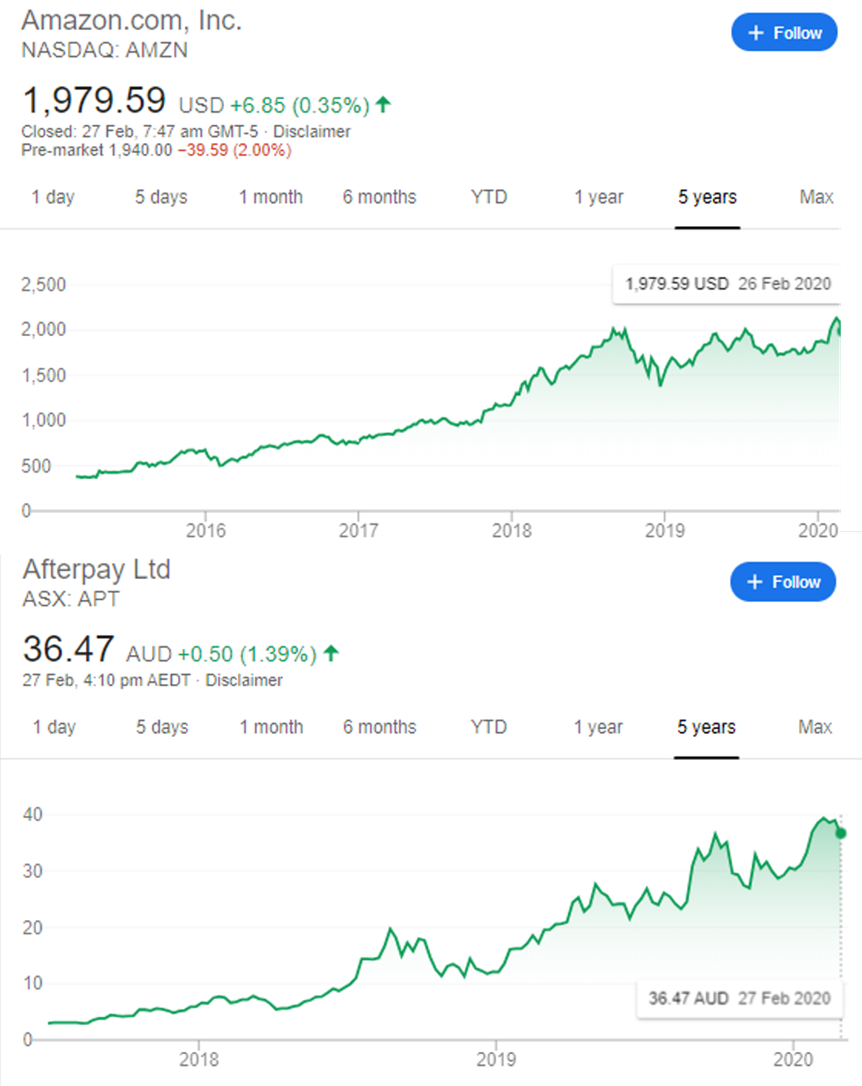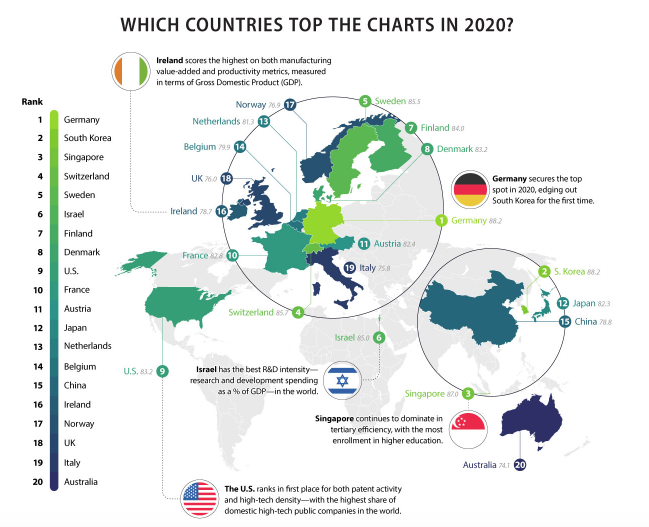Lucky pot of gold
As all things in life, with the current environment of the aftermath of bushfire chaos and global spread of COVID-19, ‘this too shall pass‘. However, the worry in an Australian context is that we have been a bit economically fat and lazy and haven’t particularly prepared ourselves for such chaos. While Australia continues to have a trade surplus of $4,799M (December 2019), this is largely underpinned by fading sectors.
While mining is likely here to stay for at least a few years to come, it does seem like high risk to continue to have such reliance of fading sectors. Even frivolous in hindsight, that we didn’t invest the massive historic earnings to fund future growth sectors, beyond the ‘easy’ money from golden soils. Human nature is to assume the good times will last forever, ‘this too shall pass.’ Seven of our top 10 exports are mining related, and we then import more than 450% more petroleum than we export unrefined, most in its refined higher value form (Trade in goods and services).
In a word of climate change, only a few of our top 10 exports are non-mining related. One is BEEF (at number eight, followed by ‘other meat’ at 12), as society moves towards eat local, vegan, vegetarian, plant based and short food miles. Education-related travel services is our fourth biggest export, yet around 38% to China, which has been long noted as risky, and recently proven so ($117 Billion – More than any other country – More >).
Over recent decades, countries like the US have adjusted well to the new world. Around 37% of the market capitalisation of the top US companies are information technology (19 of the 100 top US businesses, five of the top 10). Only 2 of the top 100 are mining related and a good cross section of other types of businesses are represented – e.g. Health Care 13%, Consumer Staples, 14%, Financials 17%), with strong profitability growth is observed across sectors. The top five (Microsoft, Apple, Amazon, Alphabet and Berkshire Hathaway) have all experienced strong share price growth over the past five years of between 155% (Berkshire Hathaway) to 547% (Amazon). (More >)
In contrast, Australia has an economically rather sad looking top 10. Five of the top 10 by market capitalisation are banks (14% of the market capitalisation of the ASX Top 100, but only 2% average growth). Of our top five, three are banks experiencing significant declines in share price over the past five years (Commonwealth -7%, Westpac -35% and NAB -29%). Mining mega company BHP also slots into the top 5 with sluggish five year share growth of 8%, indicating likely the boom times are over.

Yet, like a phoenix rising from the flames, there is hope. Groups such as CSL(innovative biotherapies and influenza vaccines) are experiencing strong growth, with the second largest market capitalisation and share price growth over the past five years of 254%. Australia’s health care sector is experiencing strong growth, including groups such asRamsay Health Careand Sonic Health Care.
Unlike the US, Information Technology is poorly represented on the ASX100, only 5% of market capitalisation, yet we do have at least two strong performers of the nine IT companies on the ASX100 – Xero (269% share price growth in five years) and Afterpay (1,136% share price index in five years More >). Also growing especially strong on the ASX100 is JB Hi-Fi, with a 131% share price increase – by remaining “extremely disciplined while gently tweaking its model to meet changing industry trends.” More >)
It is interesting to look at the success of models such as Xero, Afterplay and JB Hi-Fi in how they are adjusting to the new world. Moving with the times, building a strong brand, and forward thinking business model. It is also worth taking a long hard look in the strategic mirror on the wall …
Are Australians as pioneering as we once believed?
Are Australians actually quite strategically unsophisticated?
Are Australians in high risk of losing economic prosperity?
How can our government, education system and the growth of our entrepreneurial ecosystem be invested in to build our down-under version of Silicon Valley or Tel Aviv? Why have we moved so slow?
Confidence is critical, and “she’ll be right mate“, yet complacency kills.
“Success breeds complacency. Complacency breeds failure. Only the paranoid survive.” Andy Grove, Intel
As Australia increasingly sees traditional manufacturing decline and brands such as Holden exit Australia and deem themselves redundant, it is critical that we adjust to the new world, perhaps a bit faster than we have in recent decades. As the riches of the fat guys in mining and banking won’t sustain us forever. What can we learn moving forward?
Over time I have worked on research to gain community feedback on the changing economy and how the government and others should respond, including research from when the Australian manufacturing Holden Closure was first announced in 2013. The general feedback is one of optimism for the future, she’ll be right mate, but frustration that our government and leaders didn’t adjust many, many years ago when the change was inevitable to all. How can we learn moving forward?
The world will become increasingly chaotic and with unpredictable global events from bushfires, to floods and pandemics (or other health and other factors unpredictably taking the air out of economies globally), it is critical our entrepreneurial environment moves beyond old industries such as mining and untrusted banks, to sectors that better fit with our cultural trends and emerging global needs, as this is where the high growth economic global juggernauts will come.
Yes, ‘this too shall pass and ‘she’ll be right mate‘, but likely at least the next few months will be economically uncertain for many businesses globally. There are news reports in from Milan to China Towns across Australia and the wider business community experiencing dramatic drops in customers, to no customers. Spending has stopped for many. They still need to pay the rent, staff and likely themselves. Australia is a small (to medium) business country.
Of the 2.3M Australian businesses, 63% do not employ any staff, and 69% of those employing staff employ 1-4, 93% have turnover of less than $2M. Such businesses are the backbone of the Australian economy, and economic slowdowns put them in a vulnerable position (More >).
So, if you can spend money, do not procrastinate, support local Australian owned businesses offering great products and services, working hard to grow and build the next wave of entrepreneurs, as the era of mining and old banking starts to fade away. Get out to a local bar or restaurant, use local professional service firms and agencies, go to local shopping strips, and SPEND. Buy higher quality locally manufactured products to cheaper imports.
Many of our smaller businesses do not have the large cash reserves or financial buffers to sustain them when the economy goes south for too long, even the great local products and services.
Yet, even more critical for Australia’s economy to evolve beyond fading sectors and fat and lazy leaders, is to learn from some of the businesses successes of Australia and beyond. How they have adjusted to the new world, monitoring and evolving with cultural, technology and industry needs and trends, and implementing new business models fit for our times and the future. It will be exciting to see how our economy evolves in the coming decade!
…
But wait, there’s more …
The 2020 Bloomberg Innovation Index places Australia in a rather mediocre 20th position, down one ranking from 2019. Australia’s strongest performing area is NOT R&D, education, tech or anything particularly innovation, but ‘Productivity’ – ‘GDP and gross national income (GNI),’ largely from fading sectors as noted above such as banking and mining.
Complacent confidence is risky!

I previously posted the following related article … The Lucky Country




